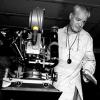Search the Community
Showing results for tags 'adjustment layers'.
-
I've watched a bunch of the tutorial videos, but can't seem to find a way to do what I want. Basically, I want to create a set of healing- / cloning-type adjustments on an adjustment layer, to preserve them independently of the pixels from which they were originally derived and to which they were originally applied. I want to do this so that, for example, if I fix facial blemishes on a portrait, or clean up its background, but then decide I want to change the underlying raw conversion (which I do in another program, and export as a 16-bit TIFF), I don't have to start over and redo my facial retouching. Ideally, I could have a 'zit fix adjustment layer', a 'background cloning adjustment layer', and just copy those adjustment layers and drop them on top of a new, differently-raw-converted TIFF. I have to think others want similar capability, and that it probably exists, but I can't figure out how to get at it. Thanks!
- 19 replies
-
- healing brush tool
- blemish removal tool
-
(and 1 more)
Tagged with:
-
Hello there! This request may sound stupid, because the least thing you'd want to happen when working on a file is being unable to go back to a previous color adjustment/setting. And in that regard, Affinity Photo is a beast! I've files with literally dozens of Adjustment Layers stacked upon each other... UNLESS... you're working on a schedule, being TIME your most relentless enemy when you're hired per hour. Last week I helped on a matte-painting project for a gaming company and (I haven't noticed this workflow issue until then), creating an Adjustment Layer whenever you need to make a quick Levels, Curves, HSL, etc. tweak and keep painting over, can become your worst nightmare when having just 8 hours to deliver 4 on-set paintings. I know you can merge that layer immediately after you've made the adjustment (even with a shortcut), but BELIEVE ME, having to: 1. Create the Adjustment Layer. 2. Nesting it to the specific layer you need to apply the tweak (if not, it affects all layers) 3. Merging it down 4. Repeat for the next one... It's a very tiring set of tasks you need to do, only to make the shadows of a single tree more intense (I.E.), inside a dozens-of-layers scene. Hope this request makes sense, because it's directly related with money and delivery times and will improve A LOT certain type of work pipelines. Cheers, Enrique
-
Right now, an Affinity Photo document can only be RGB, Grayscale or LAB at a time. However, there are several workflows where it would be beneficial to work in more than one. Examples are: Black and white conversion – you would like to end up with a grayscale image, but work with RGB data using channel mixers, HSL and so on and be able to edit these after the fact. The final image being saved as Grayscale is so important because it ensure that it ends up being separated into the CMYK black channel, leaving CMY clean. Applying LAB mode corrections like LAB curves inside of an RGB mode retouch (could also be implemented as an implicit conversion as part of the curves adjustment layer like in PhotoLine though) Manually fine-tuning the result of CMYK conversion by manipulating the image in RGB mode (possible through soft-proofing, but requires a manual CMYK-export in the end and you have to re-do any manual adjustments that may have been made on the resulting CMYK file every time) These will be even more relevant once work files can be saved natively as TIFF retaining layers and so on since you can then actually place your working files in third party software and not have to export a bunch of separate files. Especially in the B/W case, you currently have to keep your RGB original retouch, then your BW conversion RGB file, and then a final single-channel BW exported file. Currently, there seems to be no other way than to flatten the image and convert to another mode as far as I can tell (haven't tried placing embedded documents yet though). Photoshop provides a rather clumsy workflow where you can convert your entire document into a smart object and then change the colour mode of the enclosing document. But especially if you just want to quickly apply LAB curves a bunch of times in your retouch, the nesting just becomes unusable. If you had simple adjustment layers along the lines of "Convert to LAB" and "Convert to CMYK", that would make it easy to mix the best of all worlds in one single document.
- 1 reply
-
- Adjustment Layers
- RGB
-
(and 6 more)
Tagged with:
-
I'm trying to colorize a black and white using adjustment layers and masking. I'm trying to emulate the following PS tutorial in Affinity. https://www.youtube.com/watch?v=jbveFU0JL4c His method is done by creating a color balance adjustment layer and masking out an item in the photo (skin in his case.) He will then fine tune the color by creating another adjustment layer and clipping to the first layer. He'll even make several more layers with different tones all clipped to that one initial color balance layer. He'll repeat this method for all the other items in the photo. I can't seem to clip new adjustment layers together. It will just be blank when I drag it into the thumbnail. Is Affinity not able to clip multiple adjustment layers together at the moment?
- 2 replies
-
- colorize
- black and white
-
(and 3 more)
Tagged with:
-
In this image I tried too mess with color selections, color balance, selections, Adjustment layers, tone mapping and tonal adjustments to create this illustrative look.
- 1 reply
-
- color blends
- adjustment layers
-
(and 1 more)
Tagged with:
-
While I'm just getting to grips with Affinity, and this may already exist, the biggest stumbling block I've hit is not being able to select the white or black levels from the image itself as you can in Photoshop - as in, being able to hit that furtherest white option, and then flicking on the part of the image you want to be 'pure' white. Not being able to instantly select the background as white when what I'm mostly doing is making the background of an image white for product photography is really jarring. It's not enough to turn me away from the product, entirely because I can't afford any Adobe products, but it's definitely turned me away from using Affinity Photo for any photo I have with a white background at the moment. I would definitely rather see the final product with that level of precision in the levels adjustment layer than without it.
-
- levels
- adjustments
-
(and 1 more)
Tagged with:
-
An odd problem cropped up yesterday. I needed to copy a bunch of nine adjustment layers from one pixel layer to another. Easy I thought - just group select them and copy paste to the new pixel layer. I found to my surprise that I could find no way of group selecting masks and adjustments etc. on their own without the image layer. In the end I had to do the operation on a layer by layer basis. Am I missing something here?
- 3 replies
-
- group selecting adjustment la
- adjustment layers
- (and 1 more)
-
Maybe this question has been covered somewhere else but I could not find it. Is there a way to combine several curve adjustments made to a single image (jpeg) in order to improve the dynamic range (HDR effect) of that image? in other words, in one adjustment, I optimize shadow detail, while in another curve adjustment, I optimize highlight detail, etc. I know you can try to do that with a single curve but sometimes, if there are a lot of small adjustments, it is easier to create several curves to address different tonal areas. I would like to know if there is a way to combine the adjustments so they don't cancel each other out? Or if there is another technique that I can use to obtain the same result with a single image. Thanks.
- 6 replies
-
- adjustment layers
- combining adjustments
-
(and 1 more)
Tagged with:




